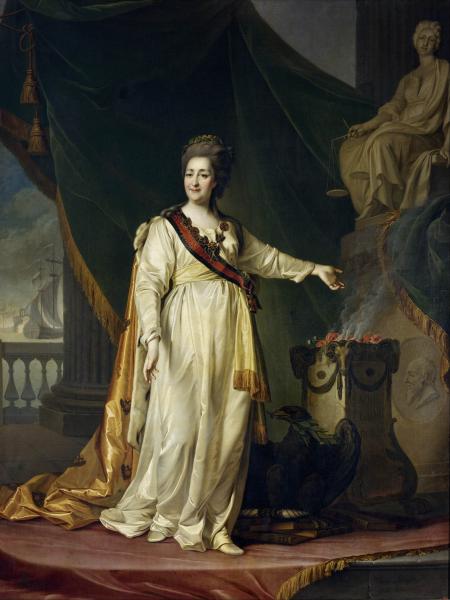
Empress, commander-in-chief, historian, amateur lexicographer, cultural patron, and playwright, Catherine the Great was also a letter writer extraordinaire. Her network of correspondents included Voltaire (the exchanges are of great historical and intelletual interest), and the philosophes Diderot, D’Alembert, Grimm (who served as her art agent), the salonnière Mme Geoffrin and Frederick the Great, Gustavus III, and George III, among the crowned heads of Europe. Written in French, Russian, and German, these letters offer remarkable insight into the life, mind, and world of an essential figure in the history of eighteenth-century Europe. Catherine’s letters represent some of her most virtuosic rhetorical displays as well as hints at her most private thoughts and many traces of her intellectual development. She is comparable to other eighteenth-century ‘enlightened’ monarchs, especially Frederick II of Prussia, in producing an extensive epistolary output as both a tool of policy and a space for intellectual and personal engagement. Through her letters Catherine managed affairs of state, tested out ideas, managed her own celebrity as well as Russia’s reputation abroad, kept an eye on rivals like Frederick as well as back-channelling through diplomatic circles.
Kelsey Rubin-Detlev, now Assistant Professor of Russian at USC in LA and formerly an Ertegun scholar here and a JRF at the Queen’s College, and I have for some time been collaborating on a project involving Catherine’s letters, most of which have been largely inaccessible and therefore much underused in scholarship. One product of our collaboration has been a Selected Letters of Catherine the Great, published by OUP in 2018 (https://global.oup.com/academic/product/selected-letters-9780198736462?cc=us&lang=en&), which provide a cross-section of letters arranged chronologically and thematically. No edition on paper of the complete letters (numbering perhaps as many as 11,000) is ever likely to appear. Catching the wave of digital humanities, Kelsey and I have created a pilot of a research tool called the Digital Database of the Letters of Catherine the Great, a.ka., CatCor. With funding from the British Academy/Leverhulme, the John Fell Fund, and the Faculty of Medieval and Modern Languages, and with the technical assistance of InfoDev (based in IT Services) and advice from EMLO, we have created a pilot database containing nearly 300 letters, tagged using TEI XML protocols. CatCor includes a new apparatus of editorial notes that facilitates the perusal of the letters with hyperlinks glossing names, places, events and objects mentioned in the correspondence. The pilot database (still behind a firewall) also provides new annotations on the letters; gathers statistics and data tables, and includes a timeline, that makes it possible to browse and filter letters by people, places, events, and objects mentioned in them; sorts letters and sections of letters by theme to reveal new and unexpected connections between various letters; and permits scholars to search the whole corpus or subsets thereof. Our next step will be to secure funding to complete a full inventory of metadata will enable us to provide the first full check-list of Catherine’s letters exists. Would-be users and browsers are very welcome to get in touch!